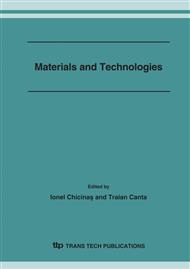p.17
p.25
p.33
p.39
p.47
p.51
p.59
p.63
p.67
A Re-Examination of the Toughness and Fatigue Performance of PM Steels
Abstract:
It is now fairly well established that to achieve low values of the Paris exponent for the growth of fatigue cracks in PM steels, high values of fracture toughness are required. Fracture toughness is related to other measures of toughness, such as impact tests and the mechanical work that the material can absorb before fracturing. All of these are functions of the basic ductility of the material. A coherent picture of all these inter-relationships is presented.
Info:
Periodical:
Pages:
47-50
Citation:
Online since:
October 2007
Authors:
Keywords:
Price:
Сopyright:
© 2007 Trans Tech Publications Ltd. All Rights Reserved
Share:
Citation:


